#Invasive Plants
Text
As garlic mustard is starting to show up, please remember that it's invasive in North America BUT native to Europe and Asia. So taking the whole plant is fine in America but not in Europe. I'm making this post in reference to last year's posts about war on garlic mustard. I've seen a post of someone who took the whole plants and they were European and learned that it's not invasive there. So do your research and forage safely and ethically.

#garlic mustard#foraging#solarpunk#plants#invasive plants#native plants#safe foraging#ecology#garlic mustard war#garlic mustard war 2023
2K notes
·
View notes
Text
speaking of invasive species
The Bradford pears are blooming and it is a NIGHTMARE. They have spread so much since literally last spring that it's like bone chilling horrifying. The population of individuals capable of flowering has virtually doubled it's awful.
There are entire fields overtaken with them, acres and acres of Bradford Pear Hell, there's saplings springing up along every fence line and roadside, just thick masses of dozens of them everywhere.
And wherever I go, for every blooming tree, there's like. 50 more saplings that are still under a meter tall. It's bad but it's going to get a whole hell of a lot worse.
This has happened SO suddenly holy shit. I remember specifically in 2013 or so my family and I were talking about those weird white trees in an old pasture across the road from our house that was reverting to woods, and what they could possibly be, since it was too early for dogwoods.
Now? Those wretched demon trees are absolutely everywhere, along every fence and tree line and bypass and ditch, stinking like boys' locker rooms and dead animals. THE HORDES OF HELL ARE UPON US. GOD HAVE MERCY ON OUR SOULS
278 notes
·
View notes
Text



Persicaria maculosa (redshank)
Under ideal conditions, this plant could grow three feet tall but, as you can see, these are not 'ideal conditions'. However, you have to give this plucky little redshank credit - it's putting out flowers and setting seed, with nothing more to work with than a crack in the sidewalk!
#flowers#photographers on tumblr#redshank#invasive plants#Survivor#fleurs#flores#fiori#blumen#bloemen#Vancouver#Canada
251 notes
·
View notes
Text
PSA: FUCK CALLERY PEARS!!!

The callery pear, sometimes known by the name of its infamous domestic cultivar, the Bradford pear, is a HIGHLY invasive species throughout the US! At this time of year (late winter to early spring), callery pears bloom and leaf out before any other native tree species, which can lead to overcrowding.

The history of the fuckass Bradford pear:
The Bradford cultivar of the callery pear was introduced into the United States in the 1960s as the ultimate ornamental tree: it flowers and leaves out early, it is naturally straight and tall, and grows super quick. Its leaves are deep red in fall and its toxic fruits are candy to birds. But these attributes would lead to it being a highly invasive species. Where I live, these trees are already greening up when most grass is still barely colored. The fact is that these trees fill in before any others, crowding out younger native plants.

(image courtesy of Leslie Mehrnoff)
Then there are the growing habits of the Bradford pear. The Bradford was originally praised for its rapid, even growth. However, these trees grow so fast that they can't build as much strength as slower-growing species, such as oaks. The forks in limbs and branches are the weak spots, and any amount of wind sends down showers of twigs. When I was younger, I lived in a house with three of these fuckers out front, and it was a hassle to constantly pick up branches and twigs from the lawn.
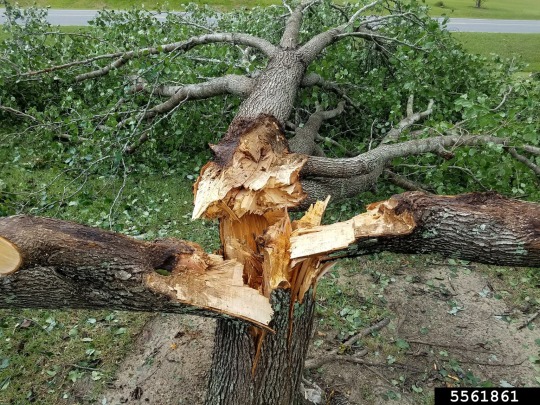
(image courtesy of Rebekah Wallace)
As a result of their accelerated growth, Bradford pears are HIGHLY susceptible to storm damage, and this can hurt houses, automobiles and other people's property. On top of that, they're not very pretty to look at whenever they're not flowering or colored up for fall.
WHAT YOU CAN DO:
Pull/dig up any suckers or saplings that you find. Beware that wild-type callery pears have enormous thorns on the ends of their branches, so proceed with caution.
Cut them the hell down. Depending on where you live, you may receive payment or even a free native tree for pear trees you cut down. Note, DO NOT cut down trees on others' property without permission from the owner of said property.
Inform others! The best way to stop the spread of these trees is to teach others about the problem! More people cutting down callery pears means less shitty invasive trees!
Thank you for your consideration!
#I forgot to mention their flowers smell like human semen so#do what you will with that info#callery pear#bradford pear#invasive species#invasive plants#conservation#plantblr
120 notes
·
View notes
Text
"Around the capital beltway or Washington’s famous Rock Creek Park, you may see a group of people ripping up vines along the treeline beside the roads.
If you have then you’ve glimpsed superheroes who traded in their capes for gardening gloves and their time for the satisfaction of terminating an invasive species and saving a native tree.
Washington D.C’s “Weed Warriors” are a group of volunteers going back to 1999 that work for free to keep hundreds of species of invasive shrubs, vines, and climbers from taking over native ecosystems.
Among the 600 or so non-native invasive plant species found in and around our nation’s capital, some like Polygonum perfoliatum, also known as “mile-a-minute” vine, can be devastating. Suffocating trees by overgrowing the leaves in their canopy branches, mile-a-minute can kill thousands of trees every year.
Since 1999, Weed Warrior volunteers have logged over 135,000 hours of time weed whacking in Montgomery County alone. Anyone can become a Weed Warrior; the group works in units for two-hour spaces removing weeds or planting native species in their place.
These invasive species management events are led by specially-trained volunteer Weed Warrior Supervisors and/or staff from the Montgomery Parks Dept. Warriors can get certified to de-weed in their spare time, or lead events on their own. They can even have their own unique patch of ground in the D.C.-Metro area to control.
Why would anyone want to trade their free time or laboring hours away for free doing something our tax dollars are supposed to do for us? The answer is simple: it’s addicting.
“If I have any good mental health, it’s due to Weed Warrioring,” said 74-year-old area resident Barbara Francisco. “You have a sense of accomplishment.” ...
The Weed Warriors website states that non-native, invasive plant species (NNIs) can alter the complex webs of plant-animal associations that have evolved over thousands of years to such a degree that plants and animals once familiar to us are eliminated...
Anyone who feels this is something they want to contribute their time to can go to the Montgomery County Parks website here and look at the upcoming Weed Warrior events—the next one is October 21st."
-via Good News Network, October 12, 2023
#washington dc#maryland#montgomery county#biodiversity#invasive species#invasive plants#vines#weeding#united states#volunteer#collectiveaction#planetearthfirst#forests#parks#good news#hope
160 notes
·
View notes
Text
The thing on my mind right now is how performative people are about native plants and what a shallow understanding of native vs. invasive so many people have. Can't see one post where someone plants some pretty non-natives in their garden without everyone in the comments insisting they tear them up immediately and replace them with natives RIGHT NOW.
Non-native plants are not inherently damaging or invasive. Especially not when CONTAINED IN A GARDEN. Invasive species still deserve humanity and mercy. Non-native plants are not inherently a threat as MOST are not well-adapted enough to become naturalized or even survive without human interference. NATIVE PLANTS CAN STILL BE AGGRESSIVE AND DAMAGING TO OTHER SPECIES. Yelling at some person with a wisteria tree or some non-natives in their garden does ultimately nothing but make some stranger upset for enjoying their own space.
Open spaces should be rewilded. Native species are beneficial when planted in their natural range, yes. But, non-natives are not innately damaging or evil and do not need to be killed with fire on sight.
92 notes
·
View notes
Text
This is the third consecutive day of pulling English ivy at this job site. All I can say is, I'm glad this job usually has more variety. Because I'm tired of pulling ivy.
71 notes
·
View notes
Text
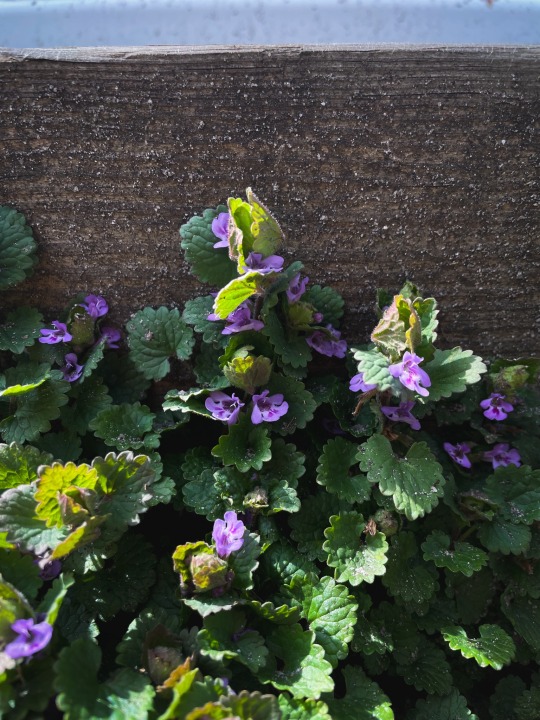
Ground ivy is another invasive edible commonly found in lawns and fields.
It was historically used when brewing beer (before hops, or when hops were unavailable), for clarity and to add an earthy, floral flavor.
This isn’t one I’d put in a salad – as a member of the mint family (lamiaceae), it has an aromatic flavor that I find similar to sage and rosemary. I use it mostly as a spice for that reason, but you can also use it to make tea. It blends well with mountain mint, lavender, and apple blossom.
#plants#foraging#ground ivy#glechoma hederacea#creeping charlie#invasive plants#edible plants#my photos
44 notes
·
View notes
Text
Some things I’ve been thinking about. At times being an American trad witch is incredibly frustrating and at others it’s absolutely exhilarating, rewarding. Reconnecting with my ancestral ( primarily french and scottish ) lore, magical practices, witchcraft etc has and will continue to inform my practice but I’ll never be a “french” witch. I’ll never be a “scottish” witch. I can find a lone hawthorn or a sacred tree guarding a hidden spring to tie the cloutie to, I can divine via a snail’s mucus trail, Fly to the Sabbath to meet The Abbess, heed the Dame Blanches, pluck the golden bloom with songs to St Columba, safeguard me and mine via silver, spring water and juniper. Yet there’s many things I’ll never know or be able to do. Whether that’s because these things are so tied to the land or a specific place, language barriers, ( working to overcome this one ) or due to the ( well warranted) gate keeping of lore and practices.
This used to be a source of great confusion for me. I think because I was afraid( due to my previous new age fuckwittery ) to experiment, do anything other than what I understood as “traditional”. My understanding being too rigid at the time; the pendulum swung from one end of the spectrum to the other. This delayed my progress and “froze” me. I was left wondering what an “American” trad craft would look like; most our books do come from a European POV. Learning of our own magical traditions as well as those of my Canadian family ( still working on that one haha ) helped. Reading Robin Kimmere helped. Reading Schulke, him being an American and writing on American plants, helped too. I’ve come to know Sugar Maple and Plantain as powerful spirits. Both teaching important lessons on how to rectify my ancestors mistakes, to foster relations with the First Peoples and how to incorporate the magic of this land into my craft. Rather than being frustrated by my being American I see it as a challenge now. I get to explore spirits, plants, places, animals, spiritual/physical ecologies ( is even really a difference between these?) completely unknown to my ancestors. I get to reconcile the old and the new. To learn from Spirit Direct. Tradition isn’t the worship of ashes, it’s the preservation of Fire. New wood must be added to keep The Fire burning. The Devil of this land certainly is a spirit of the unknown.
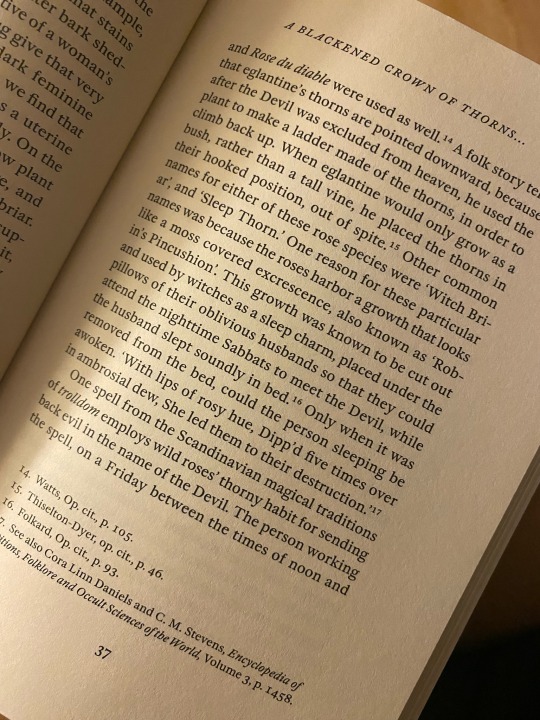
I am the land, the land is me.
I don’t own it, to it I owe all.
To it my body will return, the tithe paid.
I’m not rolling hills of heather, white chalk cliffs, the monk’s island nor the azure coast. The memories of these places echo distantly in my blood, sung alive by my ancestors shades. Part of me they’ll always be; yet it’s not who I am. Not what I am.
I’m craggy shores, dull-jade waves bearing down upon the tired rocks. I am musky pine forests veiled in mist. Sun-venerating oaks hugging the shoreline. Bleeding alders in damp ground swelling. Proud maples sustaining generation upon generation with their boiled blood. Death-grey clay, exposed by running spring.
I am the kudzu, the itching moth, the knotweed, the Norway maple, the ivy wrecking havoc upon the land. My surname and light skin proof of a genocide ongoing. I am my ancestors sins; the specter of the Old Growth forests, their grief hanging over the land like a fog. Every interaction with The Land tinged with sadness, loss.
I am my maternal side’s copper curls. Melusine’s pride. Ave Landry! Ave Gauthier! Forebears mine.
I am my paternal side’s grief. The end result of decades of cultural warfare. The Jesuits stole our name….my hair will not be cut.
Never will I libate these glacier carved valleys with booze.
I am the plantain, learning a kinder way. The sumac reclaiming the orchard.
My Februarys, my Marches aren’t snow drops and daffodils peaking through the frozen ground. They’re steely skies and walls of sleet. Bloodroot heralds winters wane; not Brigid’s flower.
My June isn’t fields of poppies, it’s seas of crimson staghorn blooms skyward reaching.
My augusts aren’t golden shafts of wheat, swaying in summer’s last breaths; they’re explosions of neon-violet and honey-yellow. Corn ripening on the vine, supporting the climbing bean. The cicadas song reverberating.
Old Michaelmas marks harvest’s end, October potatoes long buried in soils darkness finally exhumed. The Devil his Rosy Briar to ascend and plunge.
With Novembers first snows the Dead come in.
I’ll never process around a standing stone nor know what it is to live and eat off the land my dead lay in. Finally, I’m learning to be at peace with this. To love and know the land I live on. I’ll always be a stranger here, a guest. I hope to be a good one.
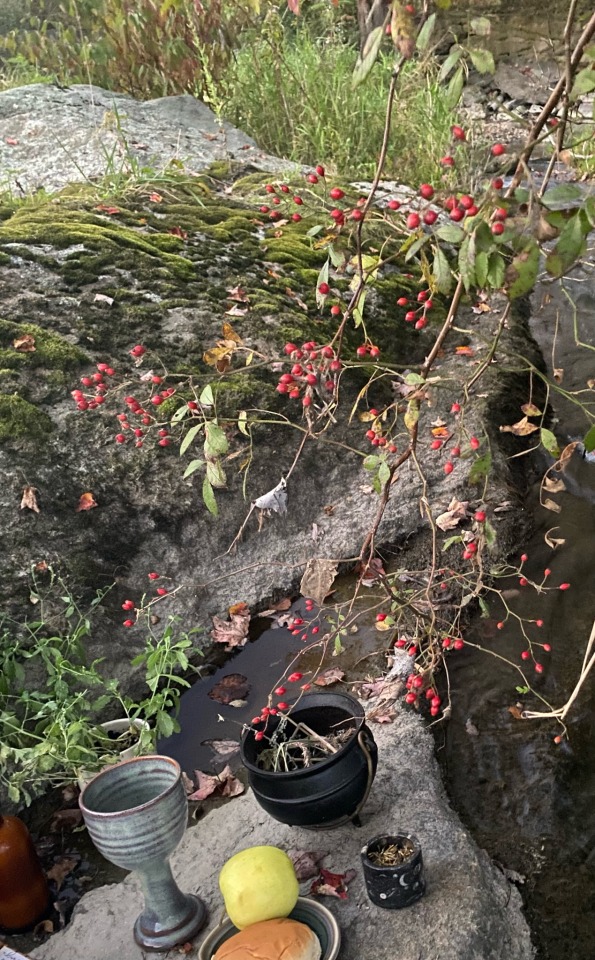
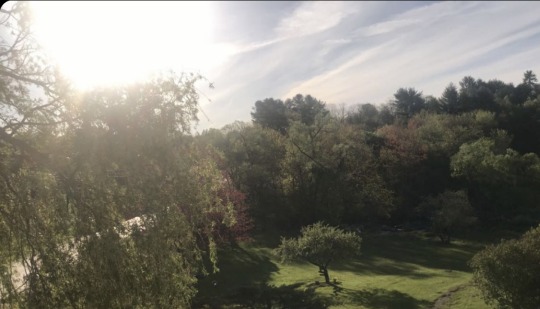
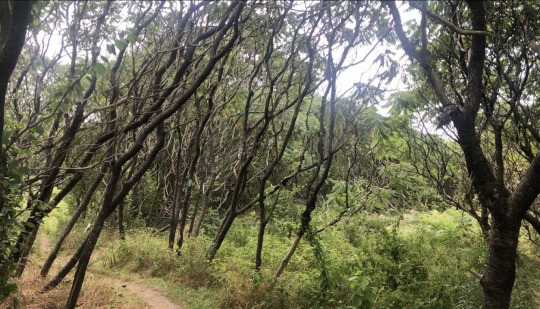
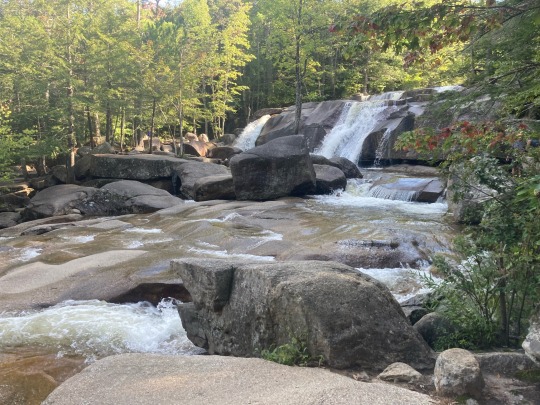
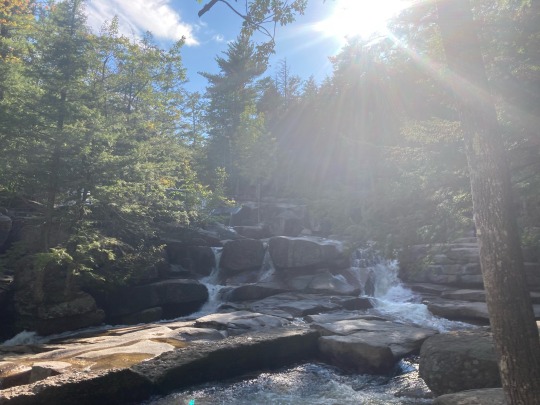
#folk magic#tradcraft#traditional witchcraft#witch#folklore#magic#magick#traditional craft#witchcraft#occult#animism#animist#animistic#animists#witches#indigenous#reparations#Michaelmas#native plants#invasive plants#ancesters#ancestry#ancestral veneration#American witch#American witchcraft#Daniel schulke#traditional American witchcraft#American traditional witchcraft#Corrine Boyer#poetry
93 notes
·
View notes
Text
Garlic mustard haul :)


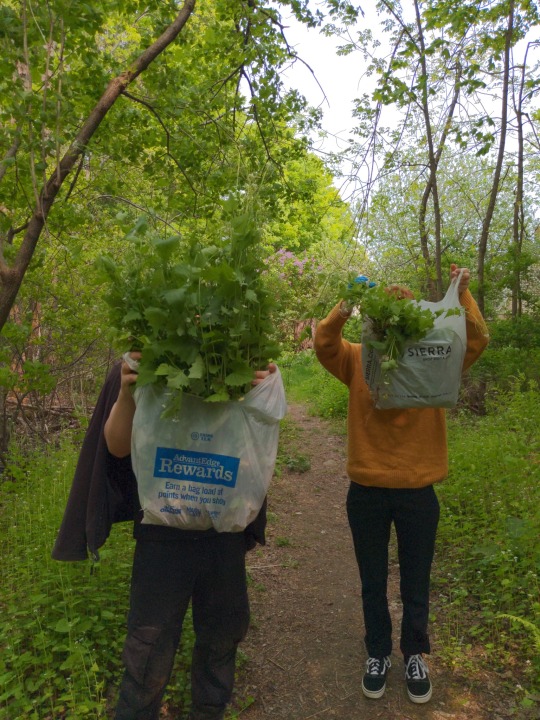
#sustainability#eat your invasives#invasive plants#garlic mustard#solarpunk#plants#foraging#garlic mustard war 2023#mine
171 notes
·
View notes
Text
This article perfectly captures my frustrations with looking into native plants. there are just so few of them that aren't imported and they're not sold locally usually which is ridiculous
lets start planting native plants again yall
106 notes
·
View notes
Text
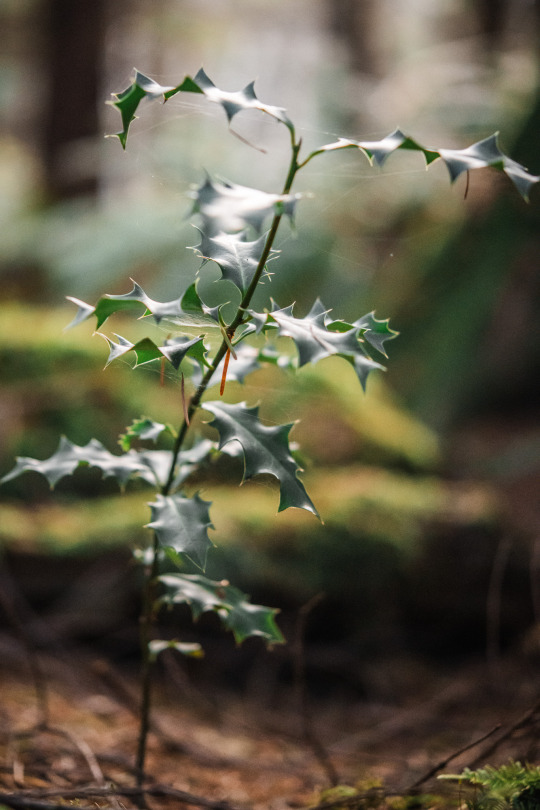
European Holly
#artists on tumblr#original photographers#original photography#hiking#pacific northwest#nature#washington#nikon#pnw#orofeaiel#european holly#plants#lensblr#forest finds#light#soft#naturecore#invasive plants
40 notes
·
View notes
Text
Since I posted the anti-lawn memes, I've been reading lots of responses in the notes and thinking about something recurring in them:
letting your yard "go wild" or just not maintaining an area= automatically good
Leaving an area entirely unmaintained is probably better than putting pesticides and herbicides on a monoculture of grass. However, an unmaintained field of grass in most areas still has a big problem:
invasive plants
The people who say in the notes that they're letting their grass grow wild are all mentioning mostly the same list of weeds and flowers that grow in its place:
white clover
deadnettle
dandelions
dog violets...
The sameness is a red flag in itself. Wild plants are incredibly diverse. There are probably hundreds of species in your area.
But also, those plants in the list are native to Europe. Which means they have the potential to be invasive elsewhere.
Non native does not mean universally bad, of course. Clover feeds bees and pollinators and it puts nitrogen back into the dirt. A lawn mixed with clover is better than a lawn that's just grass. Dandelions will also feed pollinators and they prefer areas that are extremely hostile to most plant life. They don't devour whole areas and choke out other plants in my experience, they're just tough as hell. And they're edible for humans.
But the first plants that grow up after you stop maintaining an area are often invasive. They're specialized to take over disturbed areas faster than the others, and they're the tough motherfuckers that can survive being mowed over while native plants often can't.
That means it's important to
selectively weed to give the other plants a chance
This is the tier above "stop mowing the grass," it's helping the area along a little in healing itself. I have been doing this to my own patch of ground all spring and have learned the following:
You don't actually have to plant new stuff to get a greater variety of plants. There are lots of seeds and sprouts already there...
...underneath the mat of invasive plants
Just thinning out the invasives helps. In our back yard, I ripped up most of a thick mat of wintercreeper that was choking out all but a couple canes of blackberry bushes. And not only did the blackberries start to flourish, but other stuff started to spring up. Plants that had already been there, but had been starving in the darkness underneath the invasive vines.
After that I started weeding out anything that seemed to be taking over too much. It allowed the slower-growing plants to catch up.
I'm not an expert and this isn't super scientific, but this is what I've figured out.
Basically, a place that used to be a lawn will probably be taken over by invasive plants first...because invasives take over quick and they smother and choke other plants. It's what they do.
So to get a lot of variety, you've got to rip up and cut back some of those fast-growing nasties so the more patient guys can catch up.
3K notes
·
View notes
Text
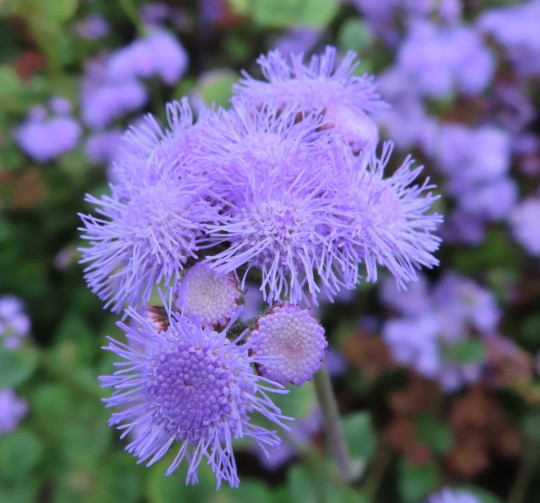

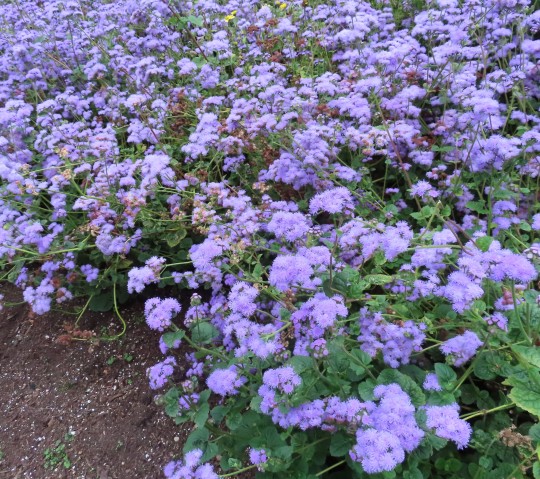
Ageratum houstonianum (floss flower)
Floss flower is native to Central America and is often used as a bedding plant. Unfortunately, it is yet another common ornamental flower that has jumped over the garden fence and become a bit of a problem. It is considered an 'invasive weed' in parts of the United States, Australia, Europe, Africa, China, Japan, New Zealand and the Philippines. Just to make matters worse, Ageratum houstonianum is toxic to grazing animals.
#flowers#photographers on tumblr#floss flower#purple#invasive plants#fleurs#flores#fiori#blumen#bloemen#Van Dusen Botanical Garden#vancouver
213 notes
·
View notes
Text
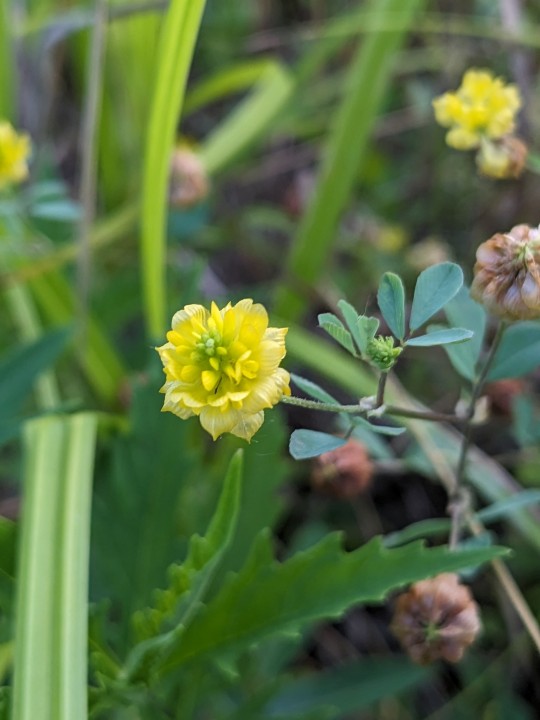
Hop Trefoil Clover
Trifolium campestre
This species of trifolium is not native to the United States, its native range is in Europe and Western Asia, but it has now been introduced in some areas of the US due to being grown for fodder and escaping. However, it's not yet listed as an invasive species here.
June 17th, 2023
Weldon Spring, St. Charles County, Missouri, USA
Olivia R. Myers
@oliviarosaline
#botany#Trifolium campestre#trifolium#clovers#shamrocks#legumes#fabaceae#flowers#plants#Missouri#Hiking Missouri#Nature#fields#woods#outdoors#hiking#exploring#yellow#yellow flowers#Missouri nature#naturecore#fairycore#cottagecore#invasive plants#non native species#beauty of nature#flower photography#plant photography#nature photography#photography
31 notes
·
View notes